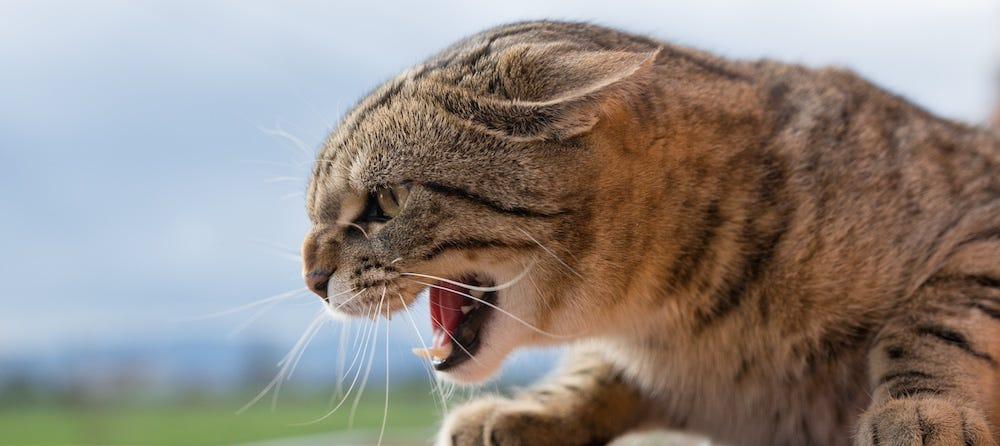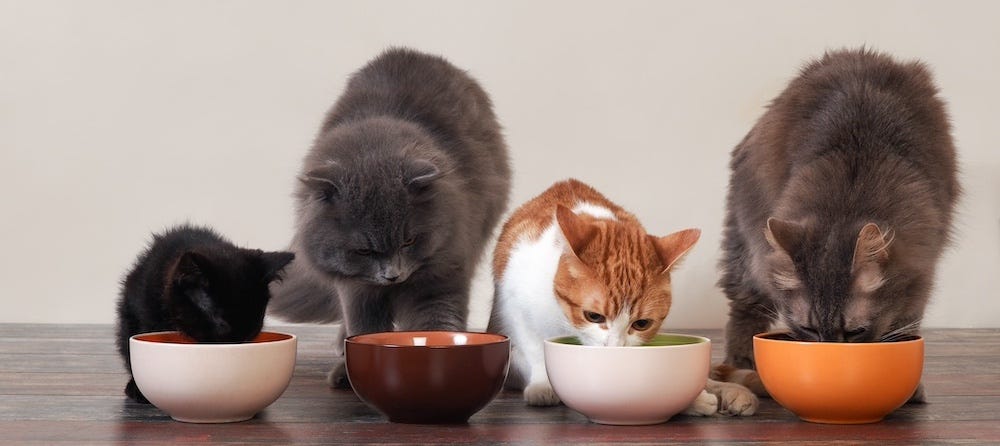Hairballs are an inevitable, albeit disgusting part of having a cat. But is it, in fact, a hairball? As an emergency critical care veterinary specialist, I see a lot of cats coming into the ER vet for vomiting. And I’m always amazed how tolerant cat parents are when it comes to vomiting.
Here’s my basic rule: If your cat is vomiting more than 1-2X/month, it may not be hairballs, yo!
First of all, what exactly is a hairball?
A hairball is a big wad of ingested hair and is often vomited up. Usually it’s an inch long, but may be up to several inches long. Cat hairballs are typically the color of your cat’s fur coat (or they better be!), but sometimes are darker due to green bile. As hair is made of keratin, it’s non-digestible—in other words, it’s not going to break down in the stomach.
So, why do cats get hairballs?
Cats like to stay clean and, as a result, love to groom. Their tongues have sharp barbs that allow them to groom their hair. (You notice this when your cat licks you!) While most cats can pass small amounts of hair down through the gastrointestinal tract (and defecate it out), sometimes hairballs get stuck. In severe cases, hairballs can grow so big that they become hard rocks (or concretions) of hair—this is medically called a trichobezoar, and can require surgery to remove because it may be too large to vomit back up or pass through the stomach or intestines.
What is the best cat hairball remedy?
Most of the time, cat hairballs can be managed easily at home through one or all of the following techniques:
- Cat grooming with clippers (be aware that your cat’s hair may grow back a different color or texture!)
- Brushing at least weekly, if not daily
- Hairball-specific food, which has higher fiber content
- Laxatone, a tasty gel laxative “lubricant,” which may help decrease the incidence of hairballs
Learn more about preventing hairballs in cats.

What if my cat is vomiting more than 1-2X/month?
If your cat vomits up hairballs more than 1-2X/month, it may be due to underlying medical problems. Sometimes those medical problems are from underlying metabolic (e.g., organ) or endocrine (e.g., hormone) problems like kidney disease, diabetes, pancreatitis, or even an overactive thyroid gland. That’s why it’s important to bring your cat to a veterinarian if the problem persists. Your veterinarian will have to do a thorough physical examination and tests to rule out medical problems.
Rarely, feline asthma can sound like “coughing up hairballs.” When in doubt, make sure your cat isn’t having difficulty breathing during these episodes, record a video of it, and seek veterinary attention to make sure it’s not this rare, life-threatening problem!
How does my vet determine if it’s “just a hairball”?
Depending on the age of your cat, your veterinarian will want to do different tests. Typically, younger, outdoor cats may need a fecal test more frequently than an indoor, apartment-dwelling cat. As cats age, they are more at risk for underlying medical problems, and will need more of an extensive work-up. Some of these tests may include:
- A thorough physical exam (looking for a thyroid nodule, feeling the size of the kidneys, etc.)
- A fecal test (looking for gastrointestinal parasites)
- Complete blood count (looking at the red blood cells, white blood cells, platelets)
- Biochemistry panel (looking at the kidney, liver, salt balance, protein, blood sugar, etc.)
- Urinalysis (looking at the ability for the kidneys to concentrate urine, evidence of a urinary tract infection or crystals, etc.)
- X-rays (to look at the shape and size of organs, evidence of gastrointestinal obstructions, arthritis, to rule out feline asthma, etc.)
- T4 (e.g., a thyroid hormone to rule out an overactive thyroid)
- Ultrasound (to look at the architecture of the organs, which X-rays can’t assess)
Other considerations
If all these tests are normal, other considerations for increased hairball vomiting include:
- Increased hair ingestion (due to skin or hair coat problems)
- Skin disease (skin allergies, food allergies, ringworm, fleas, etc.)
- Problems with the gastrointestinal tract (worms, cancer of the intestines, abnormal contraction of the intestines, etc.)
- Behavioral problems (boredom, stress grooming or compulsive behavior)
- Musculoskeletal problems (arthritis, joint disease)
- Pain (secondary to abdominal or urinary pain)
Depending on what the tests come back as, work with your veterinarian to treat the underlying problem. If all the tests are normal, treating cat hairballs may be as simple as brushing and grooming your cat more (e.g., taking your long-haired cat to a groomer to give them a summer lion cut), switching to that higher fiber diet, or adding in hairball remedy medication.
Bottom line: If your cat is vomiting more than 1-2X/month, and a different food trial doesn’t cure it, it’s worth talking to your veterinarian to make sure it’s “just a hairball.”









